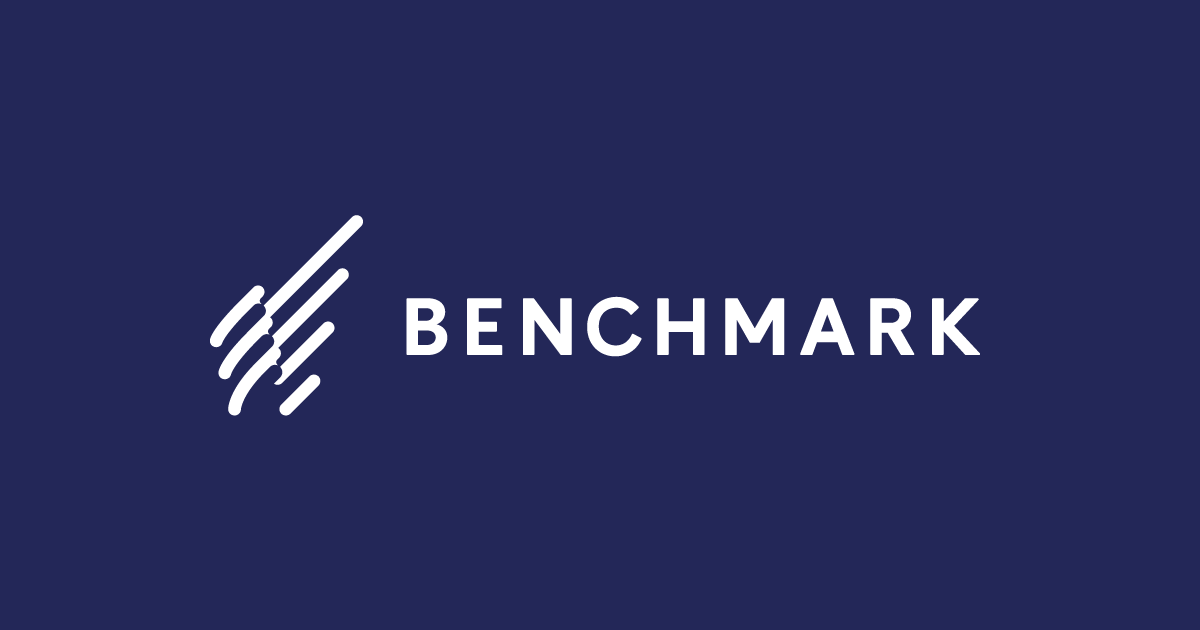Hey there, digital marketers, small business owners, and everyone in between! Are you in a pickle trying to decide between GetResponse and Benchmark Email for your 2024 email marketing campaigns? Worry not! I’m here to guide you through a detailed, no-nonsense comparison of these two popular tools. We’ll cut through the jargon and focus on what really matters to you. So, let’s jump right in and start comparing, shall we?
| GetResponse | Benchmark Email |
|---|---|
 |  |
| G2 Score – 4.2 out of 5 stars | G2 Score – 4.3 out of 5 stars |
| TrustRadius Score -8.0 out of 10 | TrustRadius Score – 6.5 out of 10 |
User Interface and Experience: The First Impression
In the world of email marketing, first impressions do count, and they start with the user interface (UI) and overall user experience (UX). Let’s see how GetResponse and Benchmark Email stand up in this arena.
GetResponse: A Blend of Power and Simplicity
GetResponse greets you with a UI that strikes a fine balance between functionality and simplicity. It’s like walking into a well-organized office – everything you need is within reach, but there’s no clutter to overwhelm you. This is especially great if you’re not a tech whiz but still want a tool that doesn’t skimp on capabilities.
Creating an email campaign in GetResponse feels like a breeze. The drag-and-drop editor is intuitive, allowing you to craft visually appealing emails without needing a design degree. It’s all about giving you the tools to create professional-looking emails that resonate with your audience, minus the headache.
And if you’re the kind who likes to peek under the hood, GetResponse won’t disappoint. Advanced features are there, but they don’t jump out at you and scare you off. It’s like having a powerful engine in a sleek car – the power is there when you need it, but it doesn’t make the ride any less smooth.
Benchmark Email: Clarity Meets Efficiency
Moving on to Benchmark Email, here’s a platform that takes clarity seriously. Its UI is clean and uncluttered, almost zen-like. This makes it incredibly easy for newcomers to navigate and get things rolling. It’s akin to walking into a minimalist-designed café where everything feels calm and easy to find.
Benchmark Email’s email editor is all about efficiency. It offers enough flexibility for most email marketing tasks without overcomplicating things. You can easily add images, text, buttons, and more, with just a few clicks. It’s ideal for those who value time-saving features that still deliver quality results.
One of the highlights of Benchmark Email is its focus on providing a seamless UX. Whether you’re setting up a new campaign, managing your contact lists, or analyzing the performance of your emails, everything flows logically. It’s like reading a good book that you just can’t put down because everything just makes sense.
If you’re looking for a tool that combines ease of use with a robust set of features, GetResponse is a fantastic choice. However, if your priority is a straightforward, clean user interface that makes email marketing as simple as possible, Benchmark Email is the way to go.
Feature Set: A Tale of Two Toolkits
Now, let’s talk about the bells and whistles – the features. After all, the effectiveness of your email marketing tool hinges on what it can do for you. Let’s compare the feature sets of GetResponse and Benchmark Email.
GetResponse: A Smorgasbord of Features
GetResponse doesn’t hold back when it comes to features. It’s like a Swiss Army knife, packed with tools for almost every email marketing need you can think of.
First off, their email automation is top-notch. Imagine setting up a series of emails that trigger based on specific actions your subscribers take, like opening an email or clicking a link. It’s like having a smart assistant who knows what your audience wants and delivers it at the right time.
But GetResponse isn’t just about emails. It extends its arms into areas like webinar hosting, landing pages, and even CRM. This is a boon if you’re looking to consolidate several tools into one. Why juggle multiple platforms when you can have it all under one roof?
The analytics in GetResponse are also worth a mention. You get detailed insights into how your campaigns are performing, which can help you tweak and improve your strategies. It’s like having a GPS that constantly guides you towards better engagement and conversions.
Benchmark Email: Focusing on the Essentials
Benchmark Email takes a different approach. It focuses on doing the essentials really well. This platform is like a specialized chef who might not cook a wide variety of dishes but makes sure every dish is a masterpiece.
Their email editor is straightforward yet powerful, allowing you to create beautiful emails without any fuss. The templates are plentiful and easy to customize, so you can always find something that resonates with your brand and message.
When it comes to automation, Benchmark Email covers the basics effectively. You can set up automated responses for new sign-ups, or create simple drip campaigns to nurture your leads. It’s like having a reliable set of tools that get the job done well, without any unnecessary complexity.
One area where Benchmark Email shines is its focus on deliverability. They work hard to ensure your emails land in the inbox, not the spam folder. It’s like having a skilled navigator who makes sure your emails stay on course.
If your email marketing strategy calls for a broad range of features and you love having everything in one place, GetResponse is your go-to. However, if you prefer a tool that masters the essentials and provides a streamlined, no-nonsense approach to email marketing, Benchmark Email is your best bet.
Pricing and Plans: Finding the Right Fit for Your Budget
Pricing is often the make-or-break factor when choosing an email marketing tool. Let’s dive into how GetResponse and Benchmark Email stack up in terms of pricing and what each plan offers.
| GetResponse | Basic Plan: Starting from $15/month for email marketing, autoresponders, unlimited landing pages, and basic segmentation. Plus Plan: Starting at $49/month, including automation, webinars (up to 100 participants), and contact scoring. Professional Plan: Starting at $99/month, offering advanced automation, webinars (up to 300 participants), and paid webinars. Max Plan: Custom pricing, providing advanced features like transactional emails, dedicated support, and single sign-on (SSO). |
| Benchmark Email | Free Plan: Offers basic email marketing features with a subscriber limit and Benchmark branding. Pro Plan: Pricing starts at $13/month for 500 subscribers and includes advanced features like automation, A/B testing, and targeted emailing. The price increases based on the number of subscribers. |
GetResponse: Flexible Pricing for Various Needs
GetResponse offers a range of pricing plans to suit different business sizes and needs. It’s like walking into a store where you can find something that fits not just your style but also your wallet. The pricing is based on the size of your email list, which means as your list grows, so does the price – a fair way to scale.
The basic plan of GetResponse is quite feature-rich, offering email marketing, autoresponders, and basic landing pages. As you move up the pricing tiers, more advanced features like automation, webinars, and CRM become available. It’s like upgrading your car – you start with a reliable model and move up to more luxurious options with more features as needed.
For those on the fence, GetResponse offers a free trial, allowing you to test the waters before committing. This is a great opportunity to see if the tool aligns with your marketing strategy without any initial investment.
Benchmark Email: Straightforward and Affordable
Benchmark Email’s pricing strategy is all about transparency and affordability. They offer a straightforward structure where you get access to all the essential features, regardless of the plan you choose. It’s akin to an all-you-can-eat buffet – pay once and get access to everything on offer.
The free plan of Benchmark Email is quite generous, allowing small businesses and startups to kickstart their email marketing without any financial strain. As your needs grow, you can upgrade to their paid plans, which are reasonably priced and offer additional capabilities like automation and more detailed reporting.
Benchmark Email’s approach to pricing is particularly appealing to those who are just starting out or have limited email marketing needs. It’s like finding a cozy café where you don’t have to pay a premium for a warm, inviting atmosphere.
If you’re looking for a tool that grows with your business and offers an extensive feature set at higher tiers, GetResponse offers a flexible and scalable pricing model. However, if you prefer straightforward, budget-friendly pricing with all the essential features included, Benchmark Email is a great choice.

Related: Check out our free SEO suite

Customer Support: Ensuring You’re Always Supported
Customer support can often be the unsung hero in your email marketing journey. Let’s compare how GetResponse and Benchmark Email fare in this crucial aspect, ensuring you’re well-supported whenever you need assistance.
GetResponse: Comprehensive Support for Every User
GetResponse takes customer support seriously, offering a variety of channels to ensure you can get help whenever you need it. Their 24/7 live chat support is like a friendly neighbor who’s always there to lend a hand, regardless of the time of day.
For queries that aren’t urgent or require more detailed assistance, GetResponse also provides email support. The responses are typically thorough and timely, ensuring you’re not left hanging with your problems.
In addition to direct support, GetResponse boasts a vast library of resources. From detailed guides and video tutorials to webinars, they provide a wealth of knowledge to help you navigate their platform and improve your email marketing skills. It’s like having a personal coach guiding you through every step of your marketing campaign.
Benchmark Email: Focused and Efficient Support
Benchmark Email, while not offering 24/7 support, still provides excellent customer service. Their email support is responsive and helpful, with a team dedicated to resolving your queries effectively. It’s like having a reliable friend who’s always ready to help out during working hours.
For immediate assistance, Benchmark Email offers live chat support, though it’s limited to certain hours. The support team is knowledgeable and friendly, ensuring that your issues are addressed promptly and accurately.
Benchmark Email also has a comprehensive help center that includes FAQs, video tutorials, and articles. This self-help option is great for quick solutions and learning at your own pace, akin to having a handy instruction manual for all your needs.
If round-the-clock support and a wide array of educational resources are important to you, GetResponse is a clear winner. However, if you prefer direct, focused support during business hours and a well-rounded help center, Benchmark Email will not disappoint.
Analytics and Reporting: Navigating the Success of Your Campaigns
Let’s shift gears to analytics and reporting. After all, understanding the performance of your email campaigns is crucial for making informed decisions. How do GetResponse and Benchmark Email stack up in this regard? Let’s find out.
GetResponse: Deep Insights for Data-Driven Decisions
GetResponse offers a comprehensive analytics suite that’s like having a high-powered microscope for your email campaigns. You get in-depth insights into various metrics like open rates, click-through rates, and subscriber activities. This level of detail is invaluable for fine-tuning your campaigns for maximum impact.
But what really sets GetResponse apart is its ability to track and report on advanced metrics. You can delve into the performance of automation sequences, track conversions from specific links, and even see how different segments of your list are responding. It’s like having a data scientist in your toolbelt, providing you with all the insights you need.
Additionally, GetResponse’s reporting dashboard is customizable, allowing you to view the metrics that matter most to you at a glance. This personalization makes it easier to monitor your campaigns’ performance and make quick adjustments.
Benchmark Email: Clarity and Simplicity in Reporting
Benchmark Email takes a more streamlined approach to analytics and reporting. Their focus is on clarity and simplicity, making it easy for you to understand how your campaigns are performing without getting bogged down in data overload.
You get all the essential metrics like opens, clicks, bounces, and unsubscribes. These are presented in a clear and concise manner, so you can quickly grasp the health of your email campaigns. For many users, this level of reporting is more than sufficient to gauge success and make necessary adjustments.
Benchmark Email also provides visual reports, making it easier to digest data at a glance. Their heat map feature, for instance, shows you exactly where subscribers are clicking, helping you optimize email layouts for better engagement.
If you’re a marketer who loves diving into data and craves detailed analytics to guide your strategies, GetResponse offers the depth and breadth you’ll appreciate. On the other hand, if you prefer a more straightforward, easy-to-understand approach to analytics, Benchmark Email will satisfy your needs without overwhelming you with too much information.
Integration Capabilities: Enhancing Your Marketing Ecosystem
In the digital marketing world, integration is the name of the game. How well your email marketing tool syncs with other software can greatly influence your workflow and overall strategy. Let’s see how GetResponse and Benchmark Email handle this critical feature.
GetResponse: The Integration Powerhouse
GetResponse is like a well-connected hub in the digital marketing world. It offers a vast array of integrations with popular services and applications, allowing you to create a seamless marketing ecosystem.
From e-commerce platforms like Shopify to CRM systems like Salesforce, GetResponse has you covered. These integrations are crucial for ensuring that your email marketing efforts are in sync with other aspects of your business, from sales to customer service.
Furthermore, GetResponse integrates with social media platforms, which is essential in today’s interconnected online world. You can easily align your email campaigns with your social media strategy, creating a cohesive marketing message across all channels.
For those with unique needs, GetResponse provides API access, allowing for custom integrations. This means you can tailor the tool to fit perfectly within your existing tech stack, providing a level of flexibility that’s hard to beat.
Benchmark Email: Focused and Efficient Integrations
Benchmark Email takes a more streamlined approach to integrations. While it may not have the extensive list that GetResponse boasts, it covers all the essentials with efficiency.
Benchmark Email integrates with leading e-commerce platforms, CRM systems, and other key marketing tools. These integrations are straightforward and focused, ensuring that you can connect your email marketing with critical areas of your business without any hassle.
One of the highlights of Benchmark Email’s integration capabilities is the ease of use. The process of linking other applications with your email marketing campaigns is intuitive, making it accessible even to those who aren’t tech-savvy.
If your marketing strategy involves a wide range of tools and you need a platform that can integrate with just about anything, GetResponse is a clear choice. However, if your integration needs are more straightforward and you value simplicity and ease of use, Benchmark Email will serve you well.
Conclusion:
As we wrap up our deep dive into GetResponse and Benchmark Email, it’s clear that both platforms bring their unique strengths to the table. Choosing the right one for your email marketing in 2024 will depend on your specific needs, preferences, and goals.
GetResponse stands out as a versatile and feature-rich platform, perfect for those who need a comprehensive suite of marketing tools. Its extensive range of features, robust analytics, and wide array of integrations make it a great choice for businesses looking to scale up their marketing efforts. If you want a tool that offers depth, flexibility, and a broad scope of capabilities, GetResponse is an excellent choice. Benchmark Email, on the other hand, shines in its simplicity and ease of use. It offers a straightforward, no-nonsense approach to email marketing, making it ideal for small businesses, startups, or those who are new to email marketing. With its focused feature set, clear analytics, and essential integrations, Benchmark Email provides everything you need to execute effective campaigns without the complexity.
Read Next:
- The Power of A/B Testing in Email Marketing: Making Data-Driven Decisions
- Email Marketing for E-commerce: Strategies to Drive Sales and Retention
- How I Achieved a 400% ROI with My Latest Email Marketing Campaign
- The Role of Automation in Modern Email Marketing
- Personalization in Email Marketing: Crafting Tailored Messages for Your Audience






















Comments are closed.